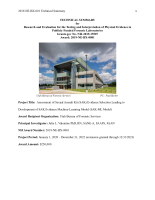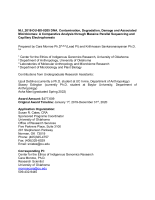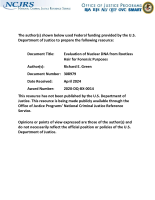DNA (Deoxyribonucleic Acid)
Collaborative Exercise: Analysis of Age Estimation Using a QIAGEN Protocol and the PyroMark Q48 Platform
Targeted Recovery of Male Cells in a Male and Female Same-cell Mixture
mtDNA-based Identification of Lucilia Cuprina (Wiedemann) and Lucilia Sericata (Meigen) (Diptera: Calliphoridae) in the Continental United States
DNA Contamination, Degradation, Damage and Associated Microbiomes: A Comparative Analysis through Massive Parallel Sequencing and Electrophoresis
Nuclear DNA from Rootless Hair for Forensic Purposes
Forensic DNA Interpretation and Human Factors: Improving Practice Through a Systems Approach
Forensic DNA Interpretation and Human Factors: Improving Practice Through a Systems Approach
Closing Cases Using Gunshot Residue
Closing Cases Using Gunshot Residue
Not every crime scene will have definitive evidence, such as DNA, to link an individual to a crime. In those cases, law enforcement relies on other evidence to build the burden of proof. NIJ graduate research fellow Dr. Shelby Khandasammy developed a tool to analyze organic gunshot residue and distinguish between different firearms calibers and manufacturers. She joins Marie Garcia, office director for the Office of Criminal Justice Systems at NIJ, to talk about her work and experience as a research fellow.









